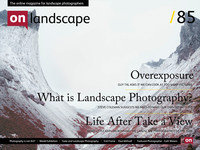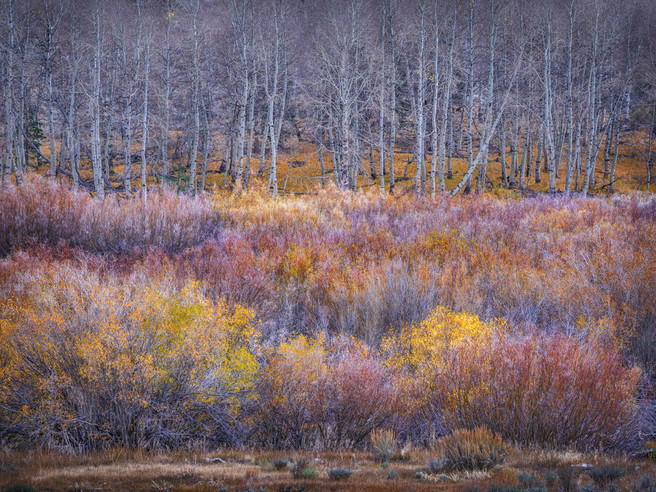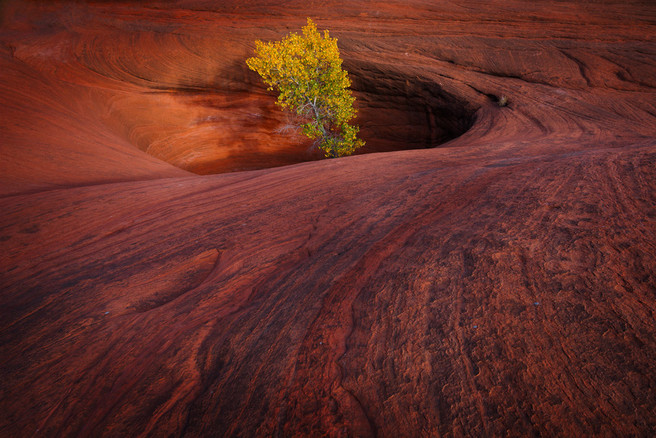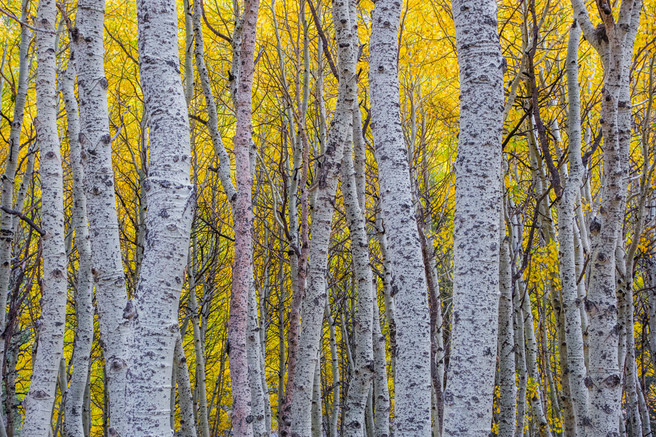Guy Tal asks is too much bad for you
“Let anyone who is accustomed to looking at a great many pictures in an exhibition try just once, if he is still capable of it, spending an hour or more in front of a single master-piece and content himself with that for the day. He will be the gainer by it.” –Hermann Hesse
It is estimated that more than 350 million images are uploaded to Facebook each day. Other popular sites report lower but similarly astounding figures, and of course these numbers still do not account for images published daily in newspapers, magazines, billboards, television shows, advertisements, etc. Certainly only a small percentage of these images is presented as art, but even subscribers to more exclusive photographic forums and media, which do promote art, likely still divide their attention among dozens, perhaps hundreds, of new images on a daily basis and often in short bursts. As cameras become more ubiquitous and more people join online communities, these numbers will continue to grow. What is not likely to grow is the amount of attention available to a viewer to experience, contemplate, research and appreciate individual works. I wish to make the point here that a disciplined approach to managing our limited “viewer time” ultimately yields more satisfying experiences than momentary impressions of large numbers of images.
While it is obvious to most that the production of good art requires an investment of skill, time and attention, it is not often acknowledged that experiencing art is also enhanced by making such an investment, and especially so with works that do not immediately command attention with extremes of color, perspective or subject matter. Moreover, the subtler or more abstract an image is, the more such investment is needed in order to fully appreciate it. As suggested by photographer Minor White, “The more knowledge (including technical, psychological, historical, and personal) that a viewer brings to a photograph, the richer will be his experience.”
I often use the metaphor of a visual language in discussing the way visual artists communicate facts and concepts in images. Not only is it a useful way to analyze how images may serve as equivalents of stories, emotions and sensations, but it also serves to illustrate some truisms about photography as a means of communication. Consider that in verbal communication those who wish to be heard but lack in vocabulary, knowledge or insight, have but one tool left: raise the volume. The same is true of visual communication where extremes may indeed command attention but often are also the equivalent of shouting. When allowing our subconscious brain to passively decide for us what to pay attention to, it will tend to favor those who scream the loudest, those who are most tempting, shocking or vulgar, and not necessarily those who have the most important, most skilled, most clever or most enlightening thing to express.
The more educated and deliberate viewer often will find more complex and rewarding experiences not in the most colorful or extreme images, but rather in consciously examining images that are nuanced and complex; images that speak quietly; images that do not unravel instantly and that require some investment of conscious thought, acquisition of knowledge or a deeper understanding of such things as the artist’s background, philosophy, motivations and goals. And so, with limited time and attention, we choose – deliberately or unwittingly – between a passive bombardment by superficial visual anecdotes and more focused, immersive, contemplations.
In a broader sense, making the conscious and deliberate choice to dedicate attention to a single image (or to a contained and cohesive body of work), rather than scanning through large numbers of random thumbnails hoping some may call attention to themselves without the need for close examination, also is striking a balance between the depth and breadth of our visual experience. If nothing else, it is an acknowledgement that the two modes result in different experiences. In failing to assert such conscious decision-making, the images you are most likely to notice are those your brain intuitively is drawn to, which may lead you to the most colorful or unusual compositions, but not necessarily to the most creative, original, thoughtful, meaningful, educational or interesting ones, all of which, in my mind, are more satisfying.
Many web sites presenting large numbers of images often sort them using algorithms that equate importance with popularity, leading the unsuspecting viewer to align their impressions with some low common denominator, rather than being led to those images that may most enrich their experience or best fit their personal sensibilities. It is therefore up to each of us to deliberately seek such images, and to challenge ourselves to learn and understand those images that exceed the low bar of popular appeal.
One issue that had been particularly troubling to me during my years in photography is the fact that people who report having powerful emotional experiences resulting from encounters with art rarely have them in response to photographs. It is not unusual for someone to be moved to tears by a piece of music or to be profoundly awed by a superbly-crafted painting, but even the most celebrated artistic photographs rarely elicit such transformational sensations. I suspect that it is the nature of abundance and dilution to lessen viewers’ motivation to dig deeper. Where most people may attend an exhibition of paintings or sculptures with at least the expectation of being deeply impressed, perhaps even to have their sensibilities and knowledge challenged, few feel so when visiting an online photo gallery. In the minds of laypeople it may well be that our work is little more than “another picture of a tree,” or “another picture of a rock,” (ARAT - ed) or “another picture of Yosemite.” As creative photographers we should be very concerned about such perceptions. At the same time we also cannot judge others for such failures if we approach the works of our fellow photographers with that same casual mindset. And so, by investing in understanding the works of others, by drilling deeper to separate an image that moves us from so many other “pictures of” the same subject matter, and by becoming more skilled viewers and critics, we also help educate our own audiences.
And so, my advice is a simple one: manage your viewing time carefully and deliberately. On a given day, find a work or a photographer or a period or a topic that interests you, whether you understand them at first blush or not, and spend the day with them – look at them closely and try to articulate what you feel about them, take some time to research, read and learn about them, share them with others if you find them worthy, become familiar with them before deciding whether they are important to you or not, and only then move on to the next thing. You and the artists you get to know will benefit in multiple ways.
If we, as artists, fail to make such investments in learning the history and traditions of our medium, and in the appreciation of worthy photographic works offering more than the simple feats of dazzling viewers with color or views of exotic locations, how can we hope that others will?





